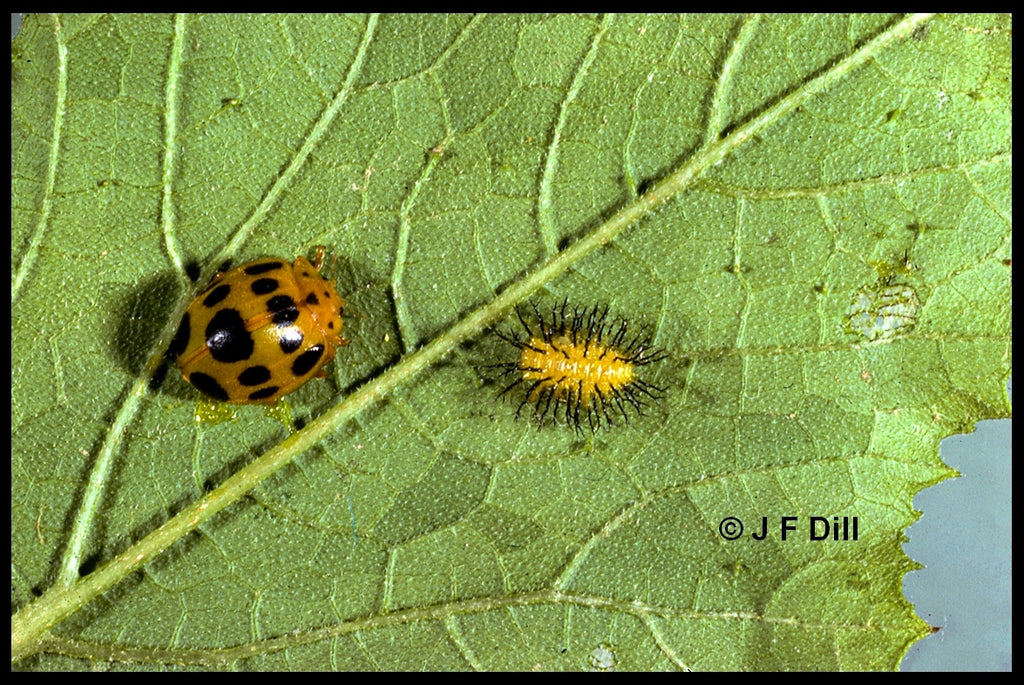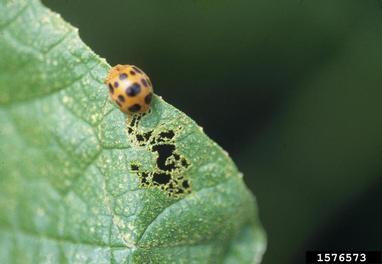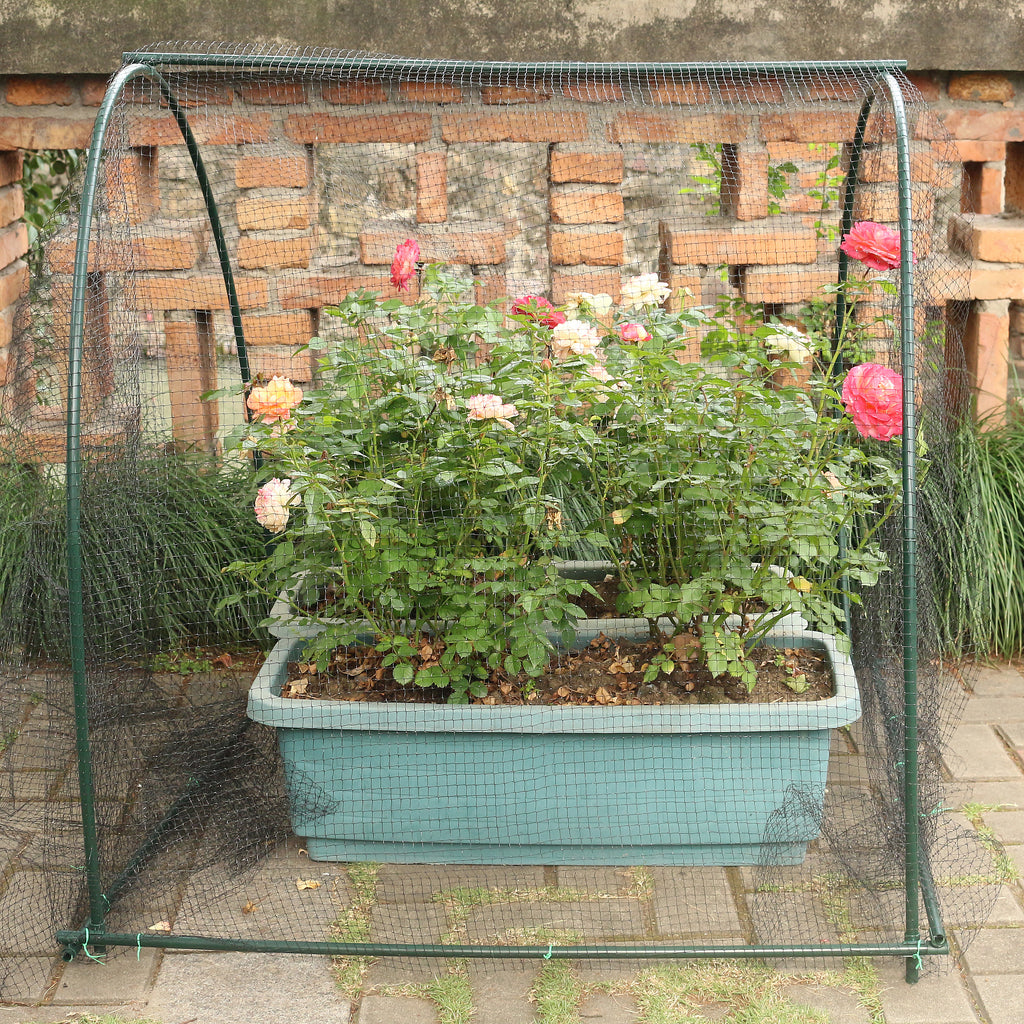
Summer’s here and the squash are in bloom! Those big yellow blossoms are portents of great things to come—zucchini, crookneck squash, patty-pans, and more! These are delicious additions to any garden, but unfortunately not only human beings find them tasty. Every gardener growing squash, cucumbers, melons, or similar plants eventually runs into squash beetles. These brightly colored garden pest can wreck havoc on your squash and cucumber plants, eating the leaves and leaving a mess in their wake. Learning to identify squash beetles and take action to deal with them is a must-have skill for many of us, so let’s dig in and learn about squash beetles and how to get rid of them.
Squash beetles are scientifically known as Epilachna borealis. These are distinct from squash bugs (Anasa tristis), which we’ll discuss in a future blog. Squash beetles are brightly colored, and are often mistaken for ladybugs—but don’t be fooled. While ladybugs are a wonderful helper in the garden, squash beetles cause nothing but trouble. Squash beetles are shaped a bit like ladybugs, but they’re yellow or orangeish in color with seven black spots on their backs. They eat the leaves, flowers, and occasionally the young fruit of squash, cucumber, and melon plants. The damage they cause is distinctive: they eat away the green parts of the foliage and leave behind a skeleton-like patch of veins and supportive tissue.

How do you know if you have squash beetles in your garden? There are a couple of surefire signs that they’ve settled into your garden space. The tell-tale damage to the leaves is often the first sign that you have a squash beetle problem, so regular inspection of your plants is a good step in early detection and thus prevention. Small clusters of eggs on the underside of your plants’ leaves is another sign that something is up, so if you find them while looking over your plants you can remove them by wiping them away with your fingers gently. Likewise you may encounter either the larva or full grown squash beetles, who should likewise be removed. You can pull them off the plant with your fingers—they’re not dangerous so don’t be squeamish—and drop them in a bucket of soapy water. Once they’ve died you can dispose of the water anywhere. Use an organic, biodegradable soap and they can go right into your compost heap!

In the garden, prevention is always better than cure and there are ways to help dissuade squash beetles from taking up residence in your space. They like to overwinter in debris, dead leaves, and the like, so clearing those away from the growing space of your garden is a good idea to prevent squash beetles. In particular, ensuring that debris like dead leaves and stems from squash and cucumber plants have been properly disposed of helps keep squash beetles away. A well-maintained compost heap isn’t especially hospitable to squash beetles and other pest, so keep your composting space tidy! For your garden beds or containers, a row cover can help block squash beetles from accessing your plants, so that’s something to look into if they become a regular or chronic problem.

Squash beetles aren’t the worst possible garden pest, but they are a common problem and thus worth some awareness and attention. With a little knowledge and effort, you can help keep these troublesome bugs away from your plants and ensure a healthy, happy garden with a great harvest this year!

Leave a comment